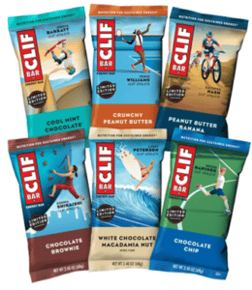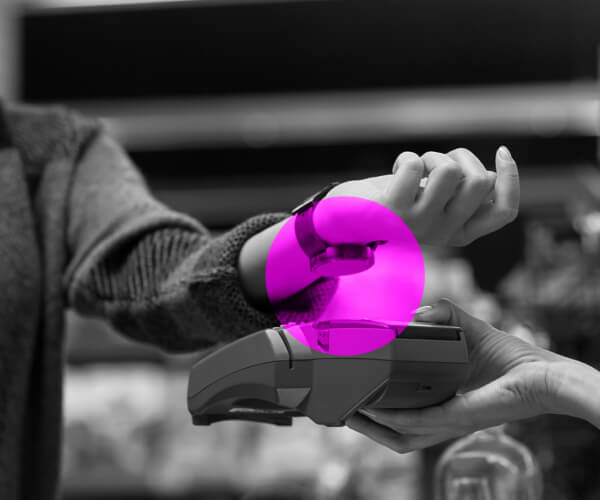As a former college athlete and now current coach (shout out to Behaviorally’s ROWE scheduling policy), I have always noticed how athletes and sportspeople alike act as our own market in the consumer world, in that we have specific needs and wants from our products. Athletes are always looking for products that can help get ahead in their sport like, how to feel better longer, how to recover faster, how to hydrate more effectively. We don’t care as much about fancy packs or flashy advertisements if the products aren’t effective – we want something that WORKS and works well. Brand messaging, communication, and core values are much more important to the athlete than a ‘pretty’ pack. While it helps, getting your brand’s message to the consumer before they are staring at the shelf or on the e-commerce digital shelf can prove more effective in marketing to this audience. Rather than focusing on getting a consumer’s attention, brands marketing to athletes must first establish trust and relevancy. We need a brand we can trust on game day to help us perform at our peak. In the sports world, so many factors are left to chance, trust in a product can’t be one. This is why brands and companies need to spend extra time thinking about how to effectively market towards the athlete. An athlete buying a product is a display of trust, trust in effectiveness – to be included in that pregame ritual or post game recovery is essential to athletes and therefore should be taken seriously by brands.
The challenge in marketing to athletes is the nature of the audience. Marketing to athletes involves innovative and strategic marketing strategies to make sportspeople choose your brand. You have to determine the specific target market you’re promoting, rather than attempting to grab hold of the whole market. Athletes come in all shapes and sizes, a wide age range, and exist in all socio-economic sectors. In addition, athletes often do not have specific “end dates” of their days of playing and sometimes even switch sports – this also creates instability in the audience. That being said, one marketing strategy may work for some athletes while totally missing the mark with others.
Currently there are many trends in the sports marketing sector. Utilizing these trends may help companies and brands attract athletes and gain growth with the audience:
-
Sustainability: Athletes that spend most of their sport time outdoors also tend to seek out brands that promote sustainability. Look into sustainable means of production and distribution then ensure those claims are readily visible on pack. Athletes will notice. This packaging from Sustainable Snacks is a good example of attracting athletes with sustainable AND healthy snacks that are perfect for pre-or post-game munchies. The eco-friendly claims are clear and the athlete can feel good about both consuming and purchasing this snack. The world is our playing field, we have to protect it if the game is to go on. (Learn more about how insights professionals can influence a more sustainable consumer choice through our We Better Behave! series with our partners, Protobrand.)
-
Sponsorships: Using notable athletes and sports teams to advertise your product/brand either on pack, in the e-commerce PDP, or marketing media is also proven effective within this audience. Sponsoring athletic events or athletes will increase your brands credibility – if I see a professional player dominating at his or her sport while using your brand, I’m going to be way more intrigued to also use the product to garner those same results. As athletes, we trust and respect the athletes we look up to and this is a good way to gain the trust of your audience quickly.
-
 Inclusivity: Most athletes and sportspeople alike feel a sense of community with other athletes, capitalize on this and use unification to demonstration a sense of trust between your brand and the sports community. Sports unities the world and can therefore unite you and your target consumer.
Inclusivity: Most athletes and sportspeople alike feel a sense of community with other athletes, capitalize on this and use unification to demonstration a sense of trust between your brand and the sports community. Sports unities the world and can therefore unite you and your target consumer. -
Experiment with Technology: As the digital-first partners to help define and diagnose consumer behavior, we at Behaviorally understand the importance of using these new innovations to reach consumers. Whether this be AI and immersive experiences or eSports such as video games. Use technology and other technical advances, like the gamification in sports, to directly communicate with your consumer and give them a first-hand experience of your product.
-
Don’t Forget Women: The female audience in the sports world has continue to grow and grow. While many are often too consumed in the male professional – do not put female athletes or professional female sports into the background. This past spring, the UEFA Barcelona-Real Madrid Champions League quarterfinal broke a record and was the most attended women’s soccer game to date garnering over 91,000 live spectators. When we said be inclusive, this means women too. Take this limited-edition packaging initiative, featuring several female athletes on the front of the pack, including fan favorites like Megan Rapinoe, Venus Williams and Katerina Nash. I remember seeing this product on shelf and immediately grabbing the Megan Rapinoe Chocolate Chip edition just because of her partnership with Clif – I hadn’t purchase Clif bars in a while, but the women in sports campaign and seeing one of my favorites on pack drew me right back in.
-
Tug at the Emotional Heartstrings: Sports are emotional for many athletes and even sports viewers alike. If your brand can strike a chord with the audience, whether it be a fond memory of sports growing up, or an emotional attachment to a player or team, it can help your product become more relevant. Seeing a brand that holds the same values as the consumer is true for the sports market as well. Conveying brand communication is essential in this space. P&G understands this point and uses this technique at every Olympic game, showcasing an emotional ad that you can’t help but shed a tear at. Check out this one from the 2016 Rio Olympics – showing how a mother’s love and support impacts athletes all over the world.
Brands and companies alike would greatly benefit from the use of Behaviorally’s 4S’s (Be Seen, Shoppable, Seductive and Selected) to target specific athlete audiences and sports enthusiasts alike. Brand trust and effectiveness of claims is the most important consideration for athletes so brands and marketing strategies must think of ways to promote these so athletes feel comfortable and exciting adding your product to their pregame rituals and post-game recovery needs. Effective marketing and packaging to athletes must involve get into the minds of competing athletes and how your brand or product can benefit them – athletes have no time for ineffectiveness.
THE AUTHOR
 Erica Hickey is an Insights Associate for Behaviorally. In her spare time she enjoys coaching and playing soccer, spending time with friends and family, video games, hiking and being outdoors.
Erica Hickey is an Insights Associate for Behaviorally. In her spare time she enjoys coaching and playing soccer, spending time with friends and family, video games, hiking and being outdoors.
